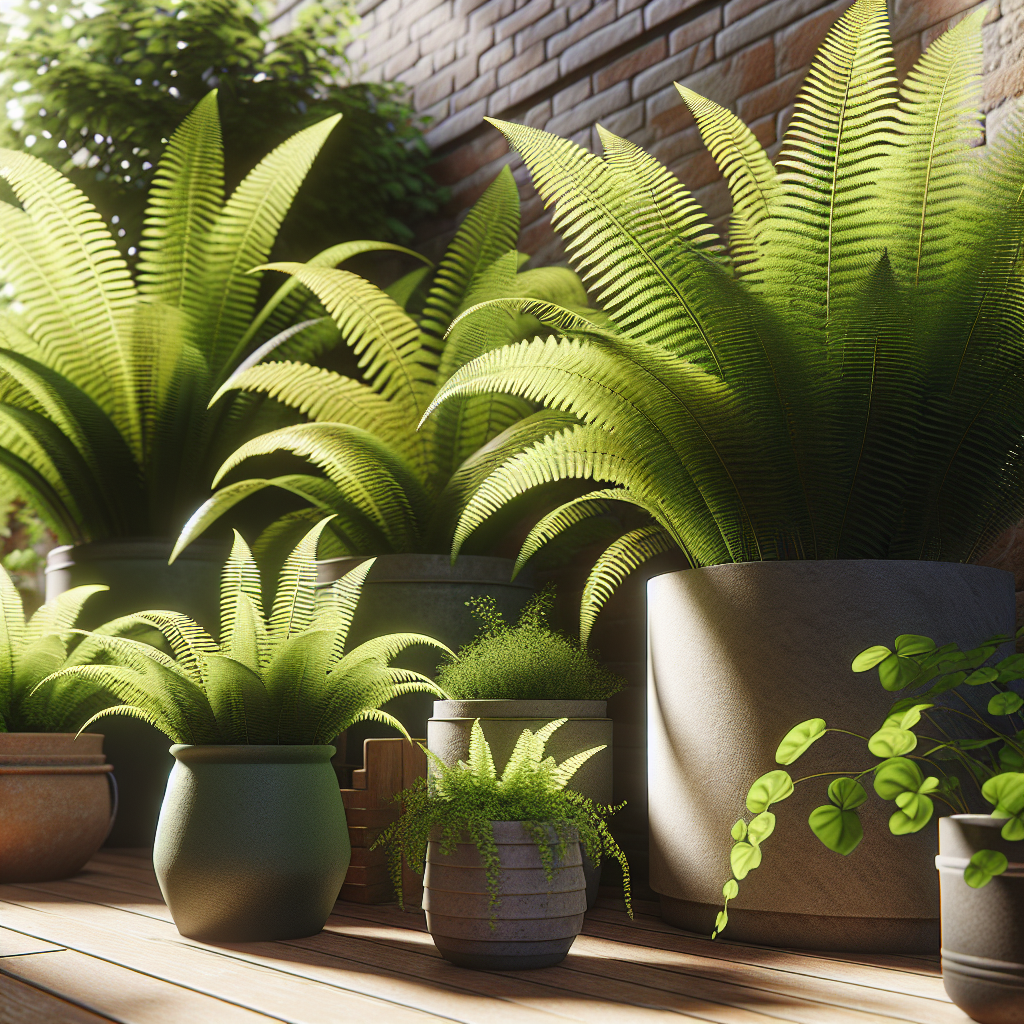Ferns are a popular choice for plant lovers looking to add a touch of greenery to their homes and gardens. These delicate, feathery plants have been around for millions of years and come in a wide variety of shapes, sizes, and colors. They are easy to care for and can thrive in different environments, making them perfect for growing in containers.
Growing ferns in containers is a great way to bring some natural beauty indoors or add a unique touch to your outdoor space. With the right care and attention, you can create a lush, green paradise filled with these elegant plants. In this article, we’ll discuss the different types of ferns that are suitable for container growing, as well as the best practices for caring for them.
Types of Ferns for Container Growing
There are many different types of ferns that can be grown successfully in containers. Some popular choices include:
1. Boston Fern (Nephrolepis exaltata): One of the most popular ferns for container growing, the Boston fern has long fronds with ruffled edges that give it a graceful appearance. It thrives in bright, indirect light and high humidity, making it perfect for indoor environments.
2. Maidenhair Fern (Adiantum spp.): Known for its delicate fronds and graceful appearance, maidenhair ferns are a beautiful addition to any container garden. They prefer filtered sunlight and moist soil to thrive.
3. Bird’s Nest Fern (Asplenium nidus): This unique fern gets its name from its nest-like appearance when young fronds emerge from the center of the plant. It does well in low light conditions and prefers regular watering.
4. Kimberly Queen Fern (Nephrolepis obliterata): A more compact variety of fern, the Kimberly Queen is perfect for smaller containers or hanging baskets. It thrives in bright, indirect light and can tolerate drier conditions than other fern species.
5.Austral Gem Fern: This exotic-looking fern features long fronds that twist and curl elegantly as they grow. It does well in low light conditions and requires regular watering to keep its soil moist.
Caring for Ferns in Containers
While ferns are relatively easy to care for compared to other plants, they do have specific requirements that need to be met to ensure their health and vitality.
1. Light: Most ferns prefer bright, indirect light but can also thrive in low light conditions if necessary shaded areas outdoors or near windows indoors are ideal locations for them.
2.Watering: Ferns require consistent moisture levels in their soil to thrive but do not like sitting in waterlogged conditions either too much water can lead to root rot while too little can cause dehydration. Water your ferns regularly whenever the top inch of soil feels dry.
3.Humidity: Ferns naturally prefer high humidity levels similar to what you would find in a tropical rainforest environment misting your plants regularly or placing them on trays filled with water will help maintain adequate moisture levels around them.
4.Fertilizing: While not heavy feeders like some other plants fertilizing your ferns occasionally will help promote healthy growth use a balanced liquid fertilizer diluted at half strength every 2-3 months during their active growing season spring through summer.
5.Trimming: To keep your container-grown fern looking its best remove any dead or yellowing fronds regularly using sharp scissors sterilized with rubbing alcohol this will encourage new growth and prevent disease from spreading throughout the plant
6.Repotting: As your fern grows it may outgrow its current container if you notice roots peeking out from the drainage holes or the plant looks crowded it’s time to repot it into a slightly larger pot use fresh potting mix designed specifically for ferns when doing so
By following these simple guidelines you can create a stunning display of container-grown ferns that will bring beauty and life into your home or garden all year round with their lush green foliage airy textures and unique shapes they are sure to be an eye-catching addition wherever you choose to place them
In conclusion growing ferns beautifully in containers is not only rewarding but also relatively easy once you understand their basic requirements by selecting the right type of plant providing proper care considering factors like light humidity watering fertilizing trimming repotting you can create an attractive display that will thrive indoors or outdoors depending on your preference take some time today to explore different varieties research their specific needs then plan out how you want them arranged within your space remember gardening is about experimenting so don’t be afraid try new things until find what works best happy planting!













